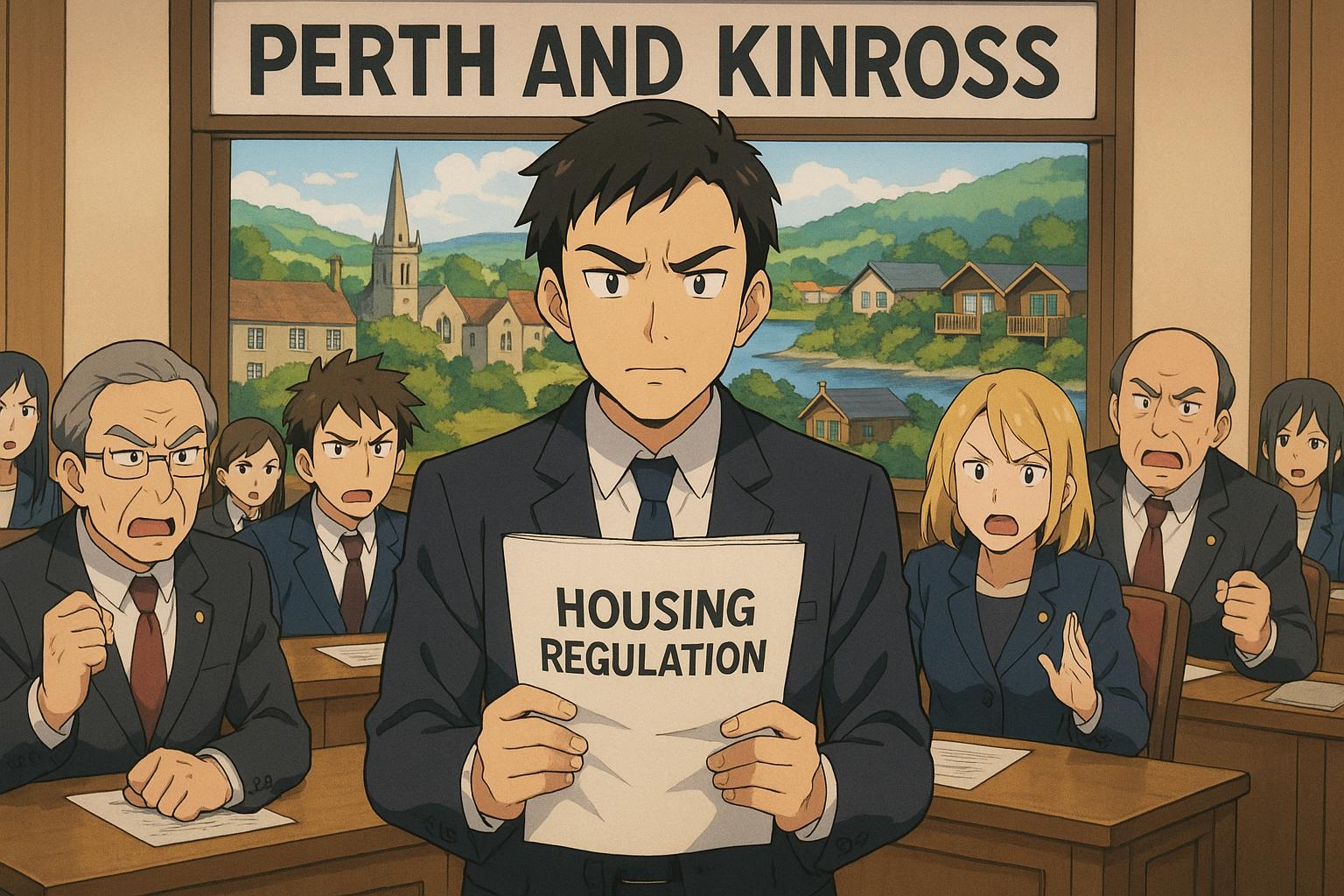Perth and Kinross Council has taken a significant step toward regulating short-term lets (STLs) in the region, marking the potential establishment of Scotland's third STL control area after a contentious debate. Previously rejected by the Economy and Infrastructure Committee in August 2024, the proposal returned to the full council for a broader vote, leading to its approval by a margin of 24 to 14 on May 7.
The original rejection in August stemmed from concerns over the impact of such regulation on affordable housing and the local economy. The Economy and Infrastructure Committee had narrowly voted against the measures, which aimed to require property owners to obtain planning permission for converting homes into holiday rentals. This initial resistance highlighted the lack of consensus surrounding STLs, with many fearing that imposing stricter regulations could threaten vital components of the local economy, especially in tourism-reliant areas like Pitlochry, Dunkeld, and Aberfeldy.
In the recent vote, the mix of support came from one Labour councillor, four Liberal Democrats, two Independents, and all 17 SNP members, while opposition was led by Conservative councillors who expressed fears of economic repercussions. Notably, some councillors who had previously opposed the proposal changed their stance, suggesting evolving perspectives on the necessity of regulation.
Depute Provost Andrew Parrott clarified that this re-examination of the proposal after a six-month interval was within procedural rights, suggesting a strategic opportunity for a fresh vote following changes in political dynamics. SNP council leader Grant Laing emphasised the need for clearer planning controls to manage the burgeoning number of STLs, which he described as essential for maintaining community integrity while preserving the economic benefits these properties bring.
However, critics, including Fiona Campbell, the chief executive of the Association of Scotland’s Self-Caterers, decried the council's decisions. She argued that only 1.7% of properties in the area are used as STLs, a stark contrast to the 3.5% lying empty. Campbell's comments underscored a fundamental critique: that regulations targeted at STLs fail to consider the broader issues affecting housing availability, such as insufficient new housing supply and demographic shifts. Furthermore, she noted that a similar STL control area recently established by Highland Council has not demonstrated any tangible improvements in affordable housing provision, raising questions about the efficacy of such regulatory measures.
The ongoing debate over STLs in the region has highlighted differing beliefs around tourism and housing issues. Supporters of stricter controls argue that STLs contribute to rising housing costs and displace potential long-term residents, while opponents highlight the economic value of these properties, which provide critical income and job support in local economies. Remarkably, analysis from BiGGAR Economics estimates that STLs generate over £51 million in economic value for the local community and sustain nearly 1,800 jobs, indicating their significance beyond mere property usage.
As Perth and Kinross prepares to move forward with formalising the STL control area, the reaction from stakeholders will be pivotal. The decision reflects a broader trend across Scotland, where local councils grapple with how to effectively balance tourism interests, housing availability, and community integrity. With a notable absence of similar evidence-led successes in areas where regulations have been implemented, the outcome of this initiative will likely be scrutinised closely as it unfolds.
The council's latest move comes against the backdrop of other significant fiscal decisions, including a recent increase in council tax for second homes, intended to raise funds for affordable housing initiatives. Such decisions reveal the complex interplay of regulatory challenges and the urgent need for effective solutions to address housing shortages in desirable rural areas. As the situation develops, local stakeholders and residents will undoubtedly be keenly observing the effects of these new regulations on their communities.
In conclusion, while Perth and Kinross Council aims to create a more structured framework for managing STLs, the broad implications for the local economy and housing availability remain contentious, and the effectiveness of such a measure will hinge on continuous dialogue among policymakers, residents, and the tourism industry.
Reference Map
- Paragraph 1, 2, 3, 4, 5, 6
- Paragraph 2
- Paragraph 2, 4
- Paragraph 2, 3
- Paragraph 4
- Paragraph 3
- Paragraph 4
Source: Noah Wire Services
